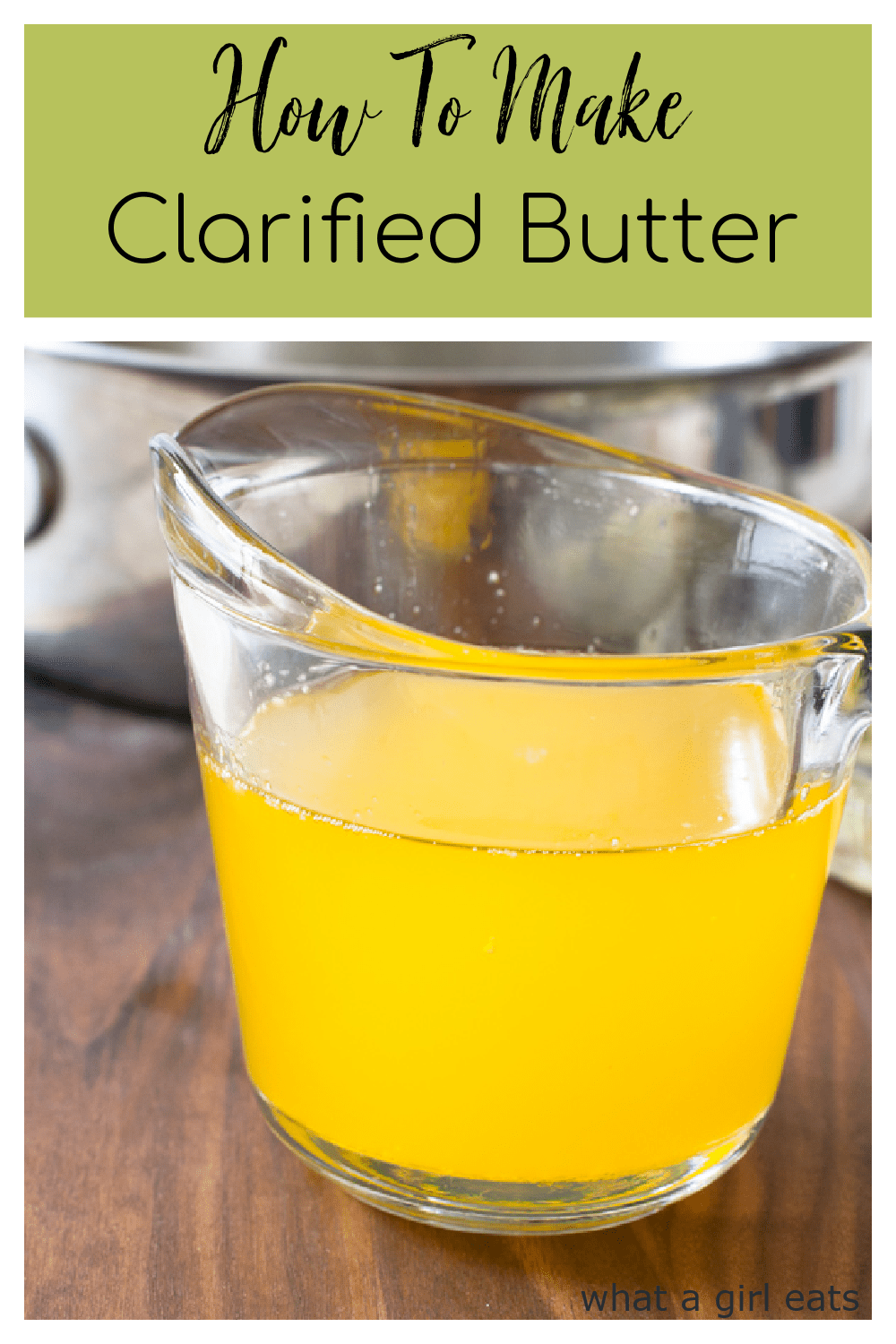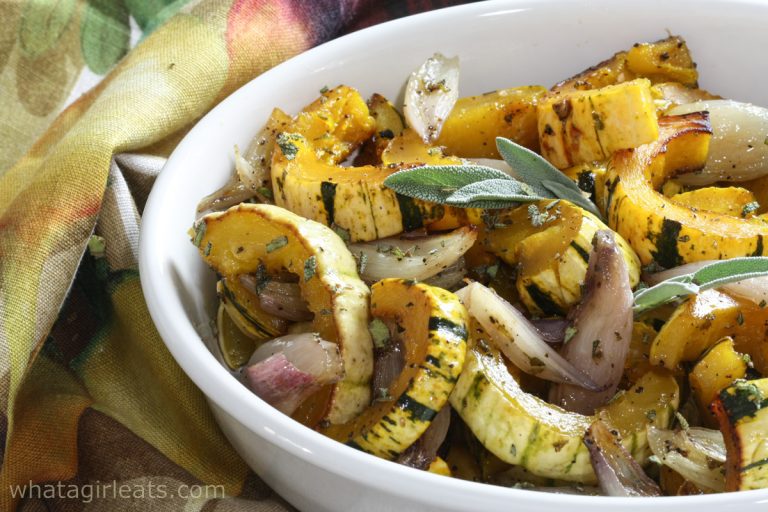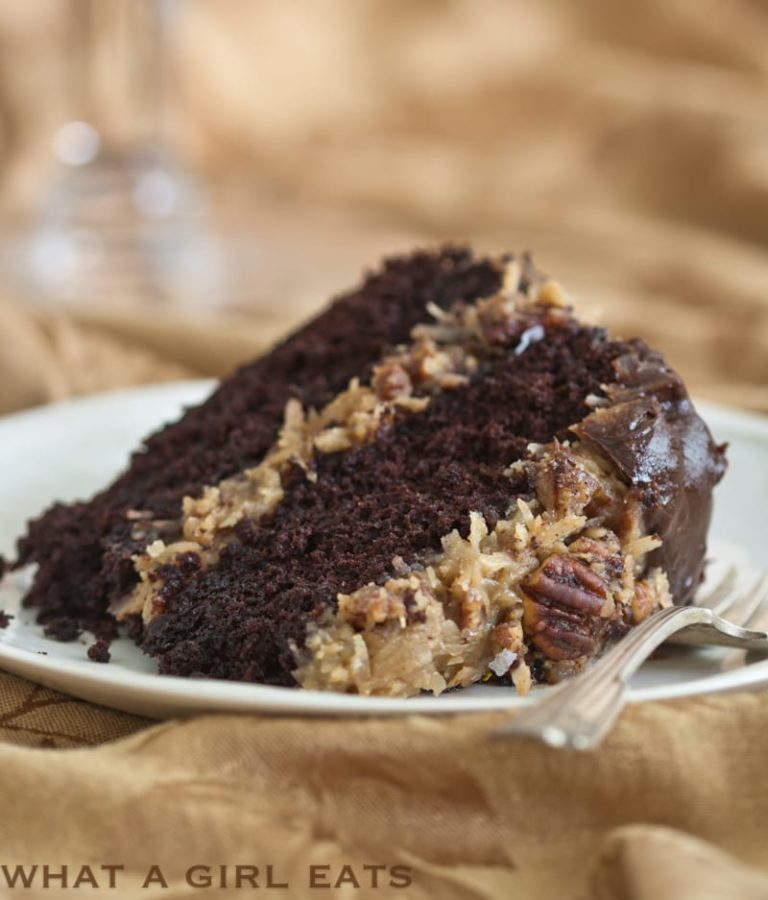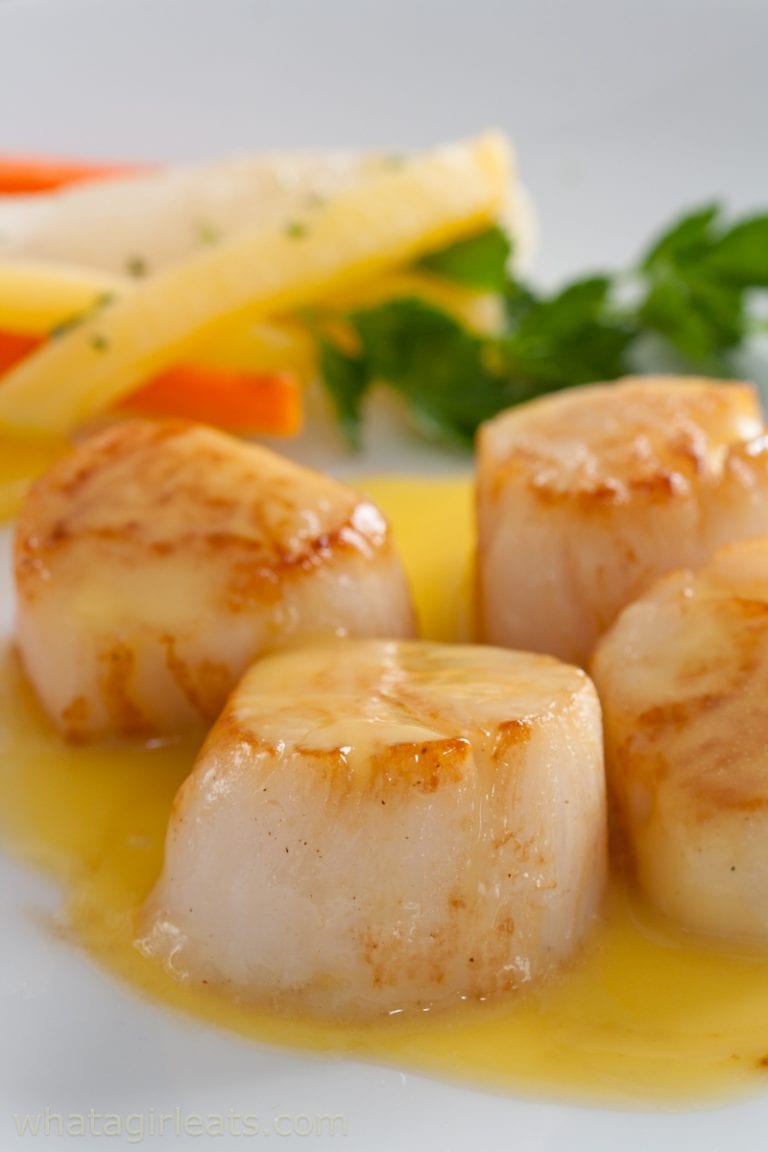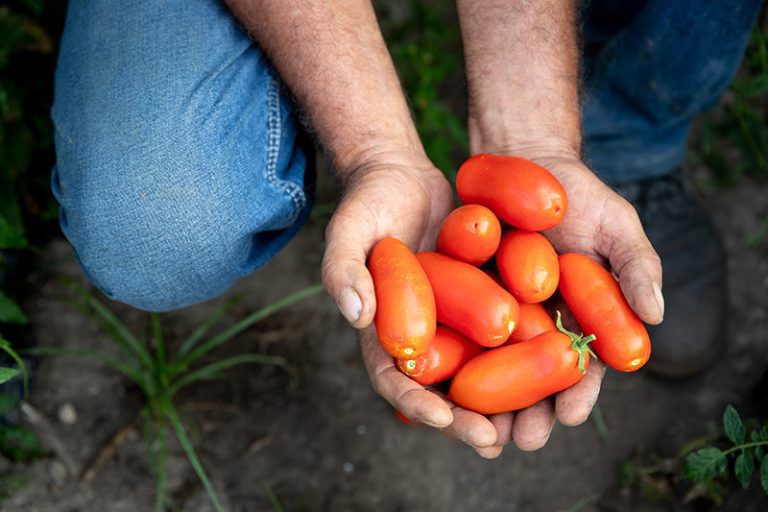Clarified Butter
As an Amazon Affilate, I earn commission on qualifying purchases.
Clarified butter is an integral part of any professional kitchen. They is always a pot of clarified butter in a hotel pot on hand for general use. If you are the first to arrive in the morning at culinary school or in a professional kitchen and there wasn’t some in fridge waiting to be gently reheated, it was your responsibility to start a big pot with 2 or 3 pounds of unsalted butter. Clarified butter is used in the professional kitchen daily.
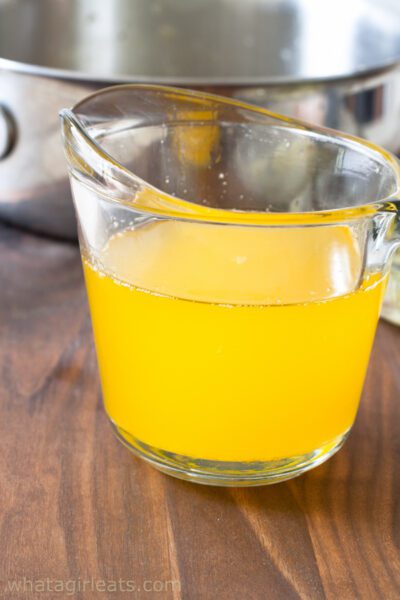
What is clarified butter?
Clarified butter is butter which has been melted until the fat can be separated from the milk solids and water until all that is left is the pure butterfat. Because the milk solids have been removed, it has a much higher smoke point than regular butter and can be used to give a rich buttery flavor to sauteed dishes. It’s also a primary component in Hollandaise Sauce. Because the lactose has been removed, some people who are sensitive to dairy can use clarified butter instead of butter.
What’s the difference between clarified butter, ghee and brown butter?
While ghee is technically clarified butter, it goes one step further in the cooking process. Once butter melts, the foam is skimmed, and it’s separated from the milk proteins, what remains is clarified butter.
Whereas ghee is cooked for a longer period of time over a very low heat, until it turns a rich golden brown. It has a nuttier flavor than clarified butter, and is used primarily in Indian cuisine. Brown butter, or beurre noisette in French is a cross between both.
Butter is heated over a low, even temperature, but the milk solids turn a rich golden brown, resulting in a rich nutty flavor. Brown butter can quickly burn, so it’s important to keep an eye on it. I use it for Mashed Sweet Potatoes with Browned Butter and Sage, or Pumpkin Ravioli with Browned Butter and Sage. It’s also the surprising, yet delicious “secret” ingredient in White Chocolate Macadamia Nut Cookies.
What is clarified butter used for?
Because it has a higher smoking point, clarified butter is used for high heat cooking when you want the richer flavor of butter instead of oil. It’s also used in sauces like Hollandaise and Bernaise. It’s also perfect for cooking Dover Sole or Sautéed Vegetables. It also acts like a barrier and can be used to preserved potted meat like this Chicken Liver Paté.
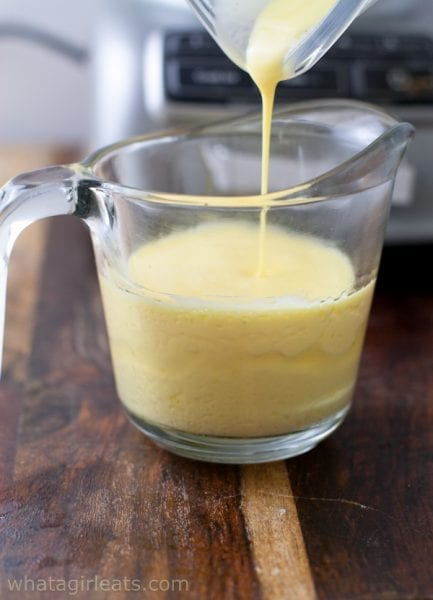
What does clarified butter taste like?
In addition to replacing cooking oil, this “liquid gold” has a slightly nutty taste. If you want a more intense flavor, read on about ghee and brown butter.
How do you store it?
Store in a covered glass jar in the fridge.
How long does clarified butter last?
It will last several weeks in the refrigerator and up to three months in the freezer.
Does the type of butter matter?
Yes it does! Because every dairy produces its butter differently, butters have varying amounts of butter fat. European-style butter is higher in butterfat than most American brands. This means that the butter with a hight water content will sputter more and affect the cooking process. American butter is typically 80% butterfat, whereas European butter has a minimum of 82% butterfat. The more butterfat, the more flavor! Minerva Dairy in Ohio sells butter that is 84% butterfat! Use unsalted butter for the best results. This is just a good rule of thumb in cooking, as it’s easier to season dishes when you are in control of the salt. Bottom line; use the best butter you can afford.
How do you clarify butter?
It’s easier to make a big batch of clarified butter and store whatever you don’t use in the fridge. Having it on hand means you can quickly grab a tablespoon or two when you need it.
Use at large enough saucepan to give the butter some room to simmer and sputter. If doubling the recipe, make sure to put the butter in a larger saucepan.
- Place 8 ounces of unsalted butter in a saucepan.
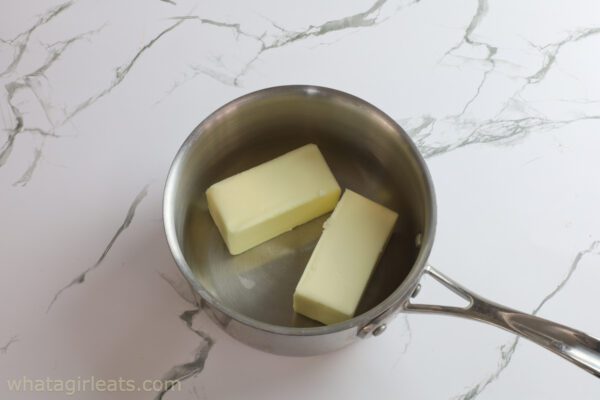
- Bring the butter to a gentle boil. It will crackle and sputter a bit. Once the butter has melted, you should see white foam on the top of the butter and the layer of milk solids on the bottom of the pot.
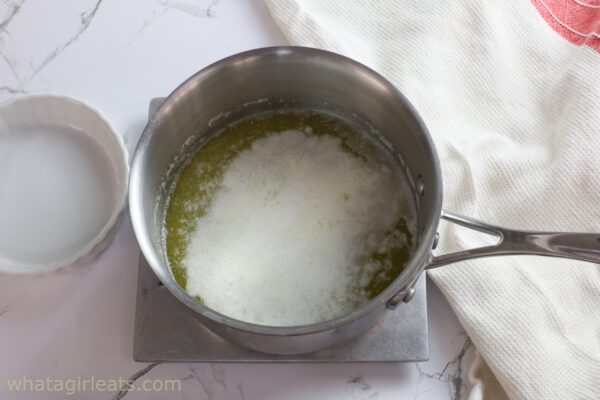
- The clarified butter is what’s in between the surface of the foamy top and the bottom of the pan.
- There are a couple of ways to finish the process.
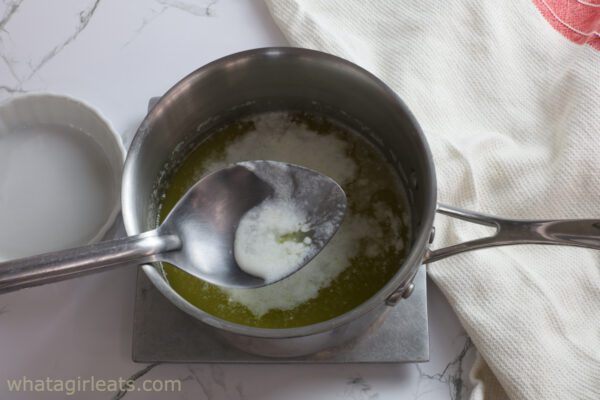
- First, you can use a large, wide spoon and carefully skim off the foam and slowly pour just the finished butter into a jar.
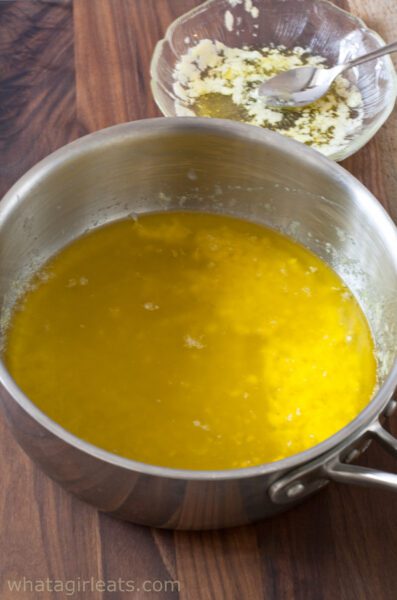
- Or, you can use a cheesecloth-lined strainer or fine sieve, and carefully pour the butter through it into a jar.
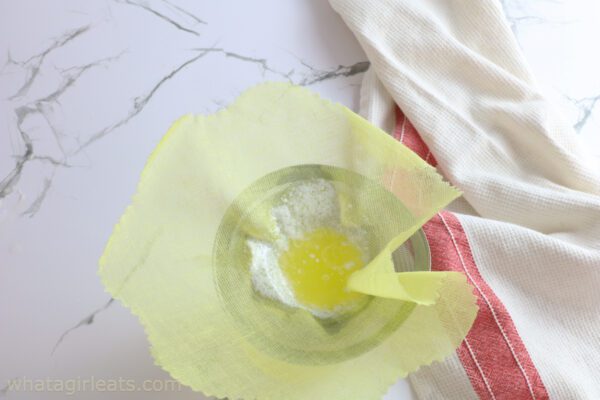
- Allow the clarified butter to come to room temperature before closing the jar and storing in the refrigerator.
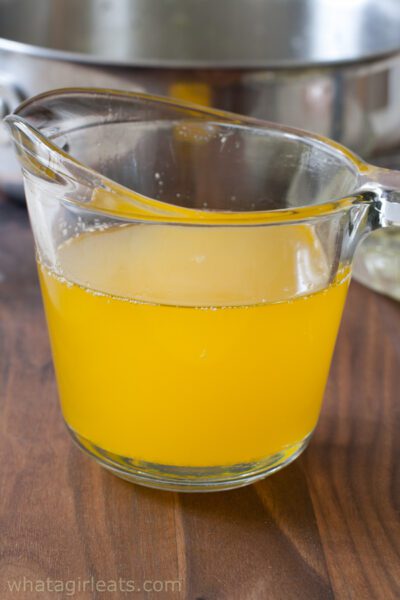
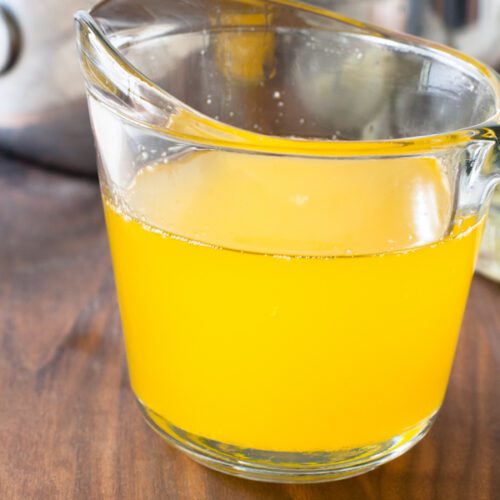
Clarified Butter
Ingredients
- 8 ounces unsalted butter
Instructions
- Melt 8 ounces unsalted butter in a small sauce pan over a low heat.
- Once the butter has melted, there will be a layer of white foam on the top. Carefully skim off all of the white foam.
- Slowly pour melted butter into a container, making sure to leave the milk solids in the sauce pan.
- Store in an jar or airtight container in the refrigerator for several weeks.

